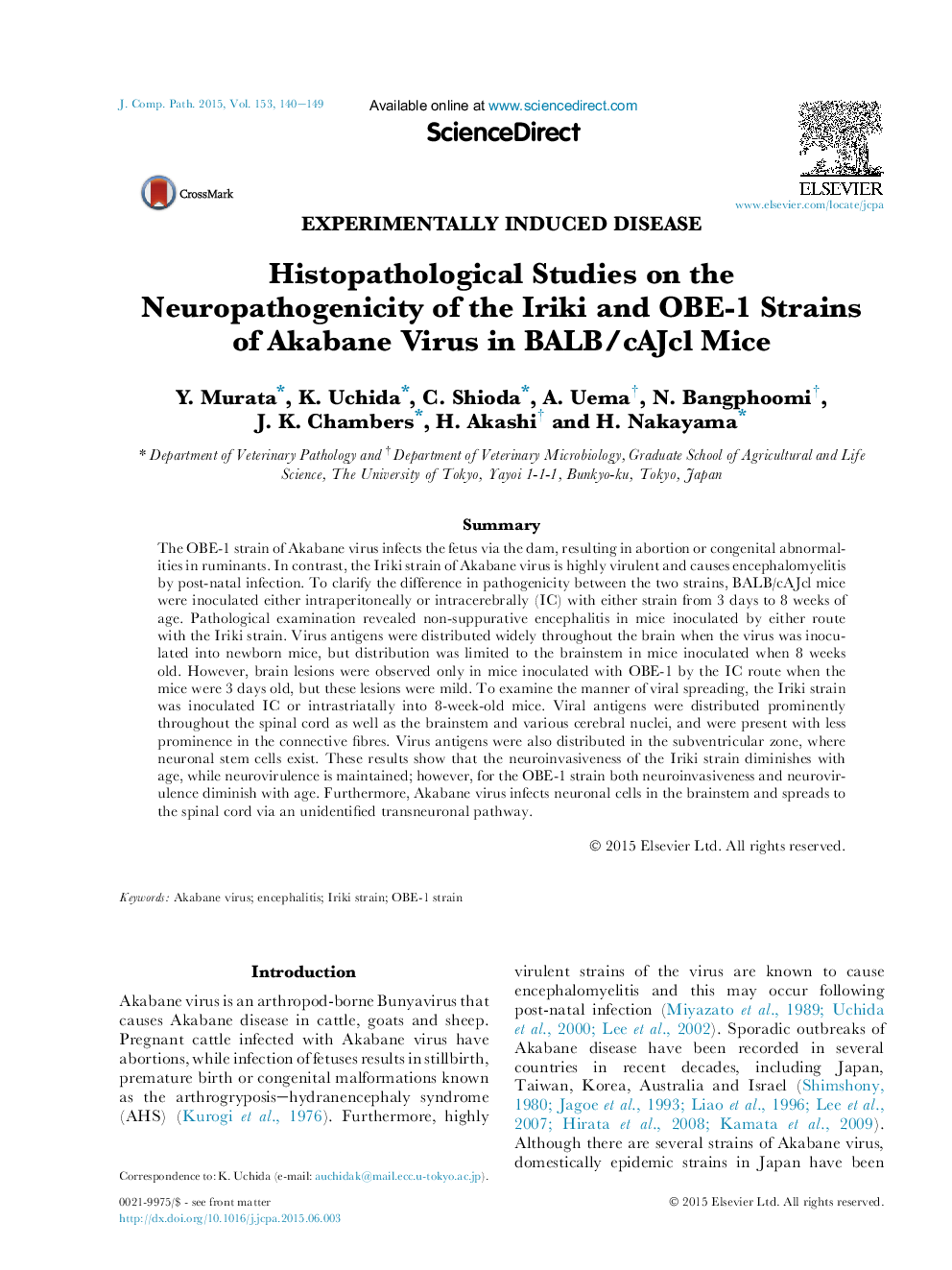| Article ID | Journal | Published Year | Pages | File Type |
|---|---|---|---|---|
| 8500690 | Journal of Comparative Pathology | 2015 | 10 Pages |
Abstract
The OBE-1 strain of Akabane virus infects the fetus via the dam, resulting in abortion or congenital abnormalities in ruminants. In contrast, the Iriki strain of Akabane virus is highly virulent and causes encephalomyelitis by post-natal infection. To clarify the difference in pathogenicity between the two strains, BALB/cAJcl mice were inoculated either intraperitoneally or intracerebrally (IC) with either strain from 3 days to 8 weeks of age. Pathological examination revealed non-suppurative encephalitis in mice inoculated by either route with the Iriki strain. Virus antigens were distributed widely throughout the brain when the virus was inoculated into newborn mice, but distribution was limited to the brainstem in mice inoculated when 8 weeks old. However, brain lesions were observed only in mice inoculated with OBE-1 by the IC route when the mice were 3 days old, but these lesions were mild. To examine the manner of viral spreading, the Iriki strain was inoculated IC or intrastriatally into 8-week-old mice. Viral antigens were distributed prominently throughout the spinal cord as well as the brainstem and various cerebral nuclei, and were present with less prominence in the connective fibres. Virus antigens were also distributed in the subventricular zone, where neuronal stem cells exist. These results show that the neuroinvasiveness of the Iriki strain diminishes with age, while neurovirulence is maintained; however, for the OBE-1 strain both neuroinvasiveness and neurovirulence diminish with age. Furthermore, Akabane virus infects neuronal cells in the brainstem and spreads to the spinal cord via an unidentified transneuronal pathway.
Keywords
Related Topics
Life Sciences
Agricultural and Biological Sciences
Animal Science and Zoology
Authors
Y. Murata, K. Uchida, C. Shioda, A. Uema, N. Bangphoomi, J.K. Chambers, H. Akashi, H. Nakayama,
